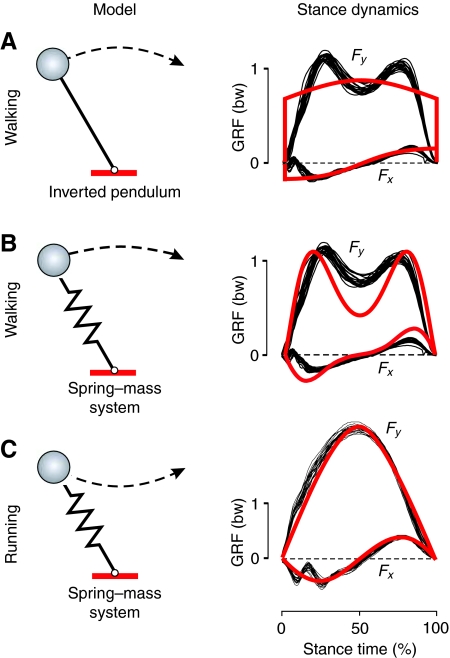Fig. 2.
Simple spring–mass models can reproduce key features of the dynamics of running and walking. Walking has historically been characterized as an inverted pendulum gait, in which the exchange of elastic and potential energy helps to power the motion of the body center of mass as it vaults over a rigid leg. (A) A simple inverted pendulum produces a ground reaction force (GRF) pattern (red) that is a poor approximation of the GRF observed in walking humans (black). bw, body weights. (B) Ground reaction forces developed during walking are consistent with an inverted pendulum model, if the model includes a leg spring. (C) The parabolic pattern of vertical ground reaction forces (Fy) and the sine-wave pattern of horizontal forces (Fx) in running are produced by a simple spring–mass model, and absolute values of forces can be matched with appropriate values for leg spring stiffness and angle of attack. Figure modified from figs 1 and 3 of Geyer et al. (Geyer et al., 2006).

